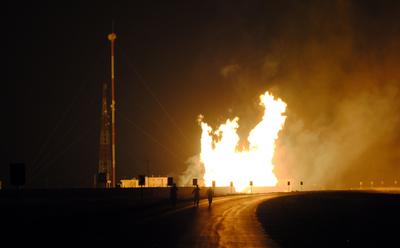This has changed recently as Pakistan has sought to rebuild and strengthen relations.
Throughout 2010–2011, Pakistani diplomats and politicians have actively sought to bolster relations with the region through a series of high-level meetings with counterparts from Kazakhstan, Kyrgyzstan, Tajikistan, Turkmenistan and Uzbekistan, discussing a range of topics such as defence, energy, infrastructure, people-to-people links, trade and investment and transportation.
Several imperatives have spurred Pakistan’s interest in developing relations with Central Asia, including the need to contest India’s growing regional influence; reduce its economic dependence on US aid, especially in view of the planned US military drawdown from Afghanistan by 2014; and an increasingly urgent requirement to secure new sources of energy and access markets for trade and investment. An additional factor is the beginning of negotiations over the TAPI pipeline, a Turkmenistan-Afghanistan-Pakistan-India project that would transport gas 1,735 kilometres from Turkmenistan’s Yoloten-Osman gas field to India’s Punjab province.
Pakistani decision makers have grown concerned about meeting the nation’s escalating energy demands, which are reportedly three times greater than supply and detrimental to industry and economic growth. Although Pakistan has, for many years, engaged in aggressive prospecting for new domestic oil and gas reserves, it continues to import 85 per cent of its energy. It is little wonder then that Pakistan has expanded its relations with Iran. For instance, in 2010 Pakistan signed a deal with Iran worth US$7.6 billion to build a pipeline by mid-2015 to pump natural gas daily from the South Fars field to Pakistan.
Given the instability in southern Afghanistan, Pakistan now sees Iran as a land route to the countries of western Central Asia, namely Turkmenistan, Kazakhstan and Uzbekistan. Through this link, Pakistan is able to access Turkmenistan’s market more readily. Pakistan has also demonstrated a strong interest in importing electricity from Turkmenistan and engaging in joint-venture partnerships to develop Turkmenistan’s South Yolotan-Osman gas field, reportedly the second largest in the world.
While amicable relations with Iran are a Pakistani foreign policy priority in their own right, the nation’s motives are also influenced by India’s efforts to finance the upgrade of the Chabahar port facility in Iran, with attendant rail and road passages directly linking Iran’s Persian Gulf coastline with western Afghanistan and Central Asia, the latter through Turkmenistan. Pakistan is also in direct competition with Iran to exploit its geostrategic position relative to the Indian Ocean as a corridor for Central Asian countries, including China, to make use of. This is particularly the case with the new Chinese-built port facility at Gwadar on Pakistan’s southern Makran coastline.
The construction of the Gwadar port facility has led to efforts to upgrade or build new rail, road and pipeline linkages that will eventually directly connect the new port to China’s southwestern border. With security and stability in Afghanistan proving elusive, the initial plans to use Afghanistan as a transit corridor to Gwadar appear to have stalled. Regardless, the economic rationale behind the port’s construction appears to be primarily linked to China’s use of the facility, which is deemed vital to China’s interests in developing alternative energy routes to access the Indian Ocean.
For Pakistan to access Tajikistan and Kyrgyzstan, it requires the cooperation of Afghanistan to use the Wakhan Corridor. Pakistan and Tajikistan are hoping to build the 1,306 kilometre long Pakistan-Tajikistan Highway to link the Tajik capital of Dushanbe to the Karakoram Highway in Pakistan. There are also indications that Tajikistan remains eager to export energy, even though Tajikistan itself is suffering from electricity shortages and often seeks help from its neighbours. Tajik President Imamoli Rakhmon has promised to complete the construction of the Rogun hydropower station, which might open up the possibility of electricity exports.
The geographic proximity between energy-resource rich former Soviet Central Asian republics and Pakistan, as well as converging economic interests, are going to shape regional ties in the long term. Energy cooperation is likely to dominate Pakistan’s relations with Turkmenistan as the latter will continue seeking new export routes for its landlocked hydrocarbon resources. Meanwhile, Tajikistan, Kyrgyzstan and Uzbekistan are keen to gain access to Pakistani markets and explore possibilities for joint ventures. The success of ambitious projects such as TAPI or the construction of vital interstate road infrastructure hinges on a key regional issue — improving security.
Sergei DeSilva-Ranasinghe is a Senior Analyst at Future Directions International.
James Brazier is the Af-Pak Analyst at IHS Global Insight.
Lilit Gevorgyan is the Europe, Russia and CIS Analyst at IHS Global Insight.
A version of this article was first published in Jane’s Intelligence Weekly (June, 2011).

